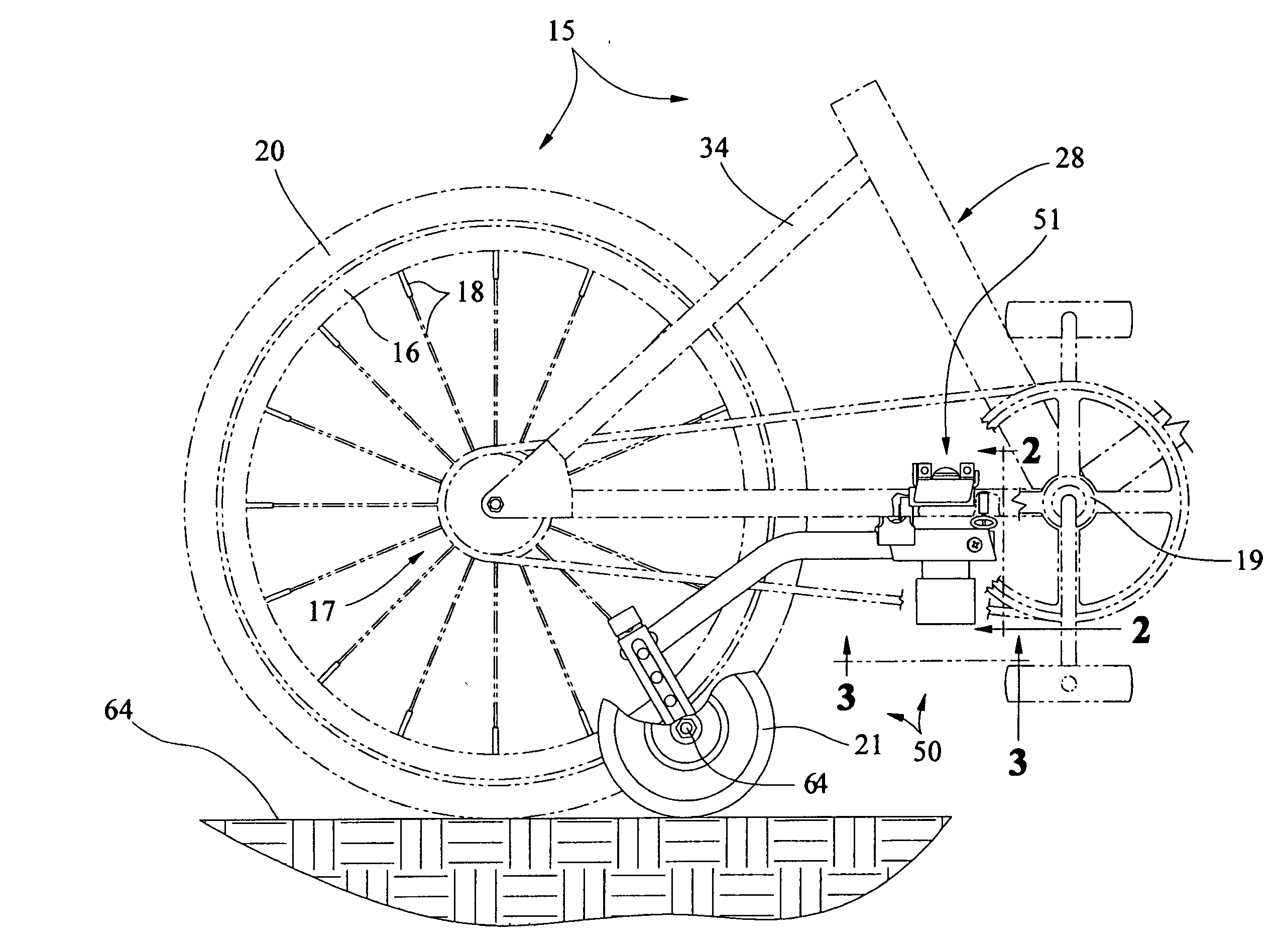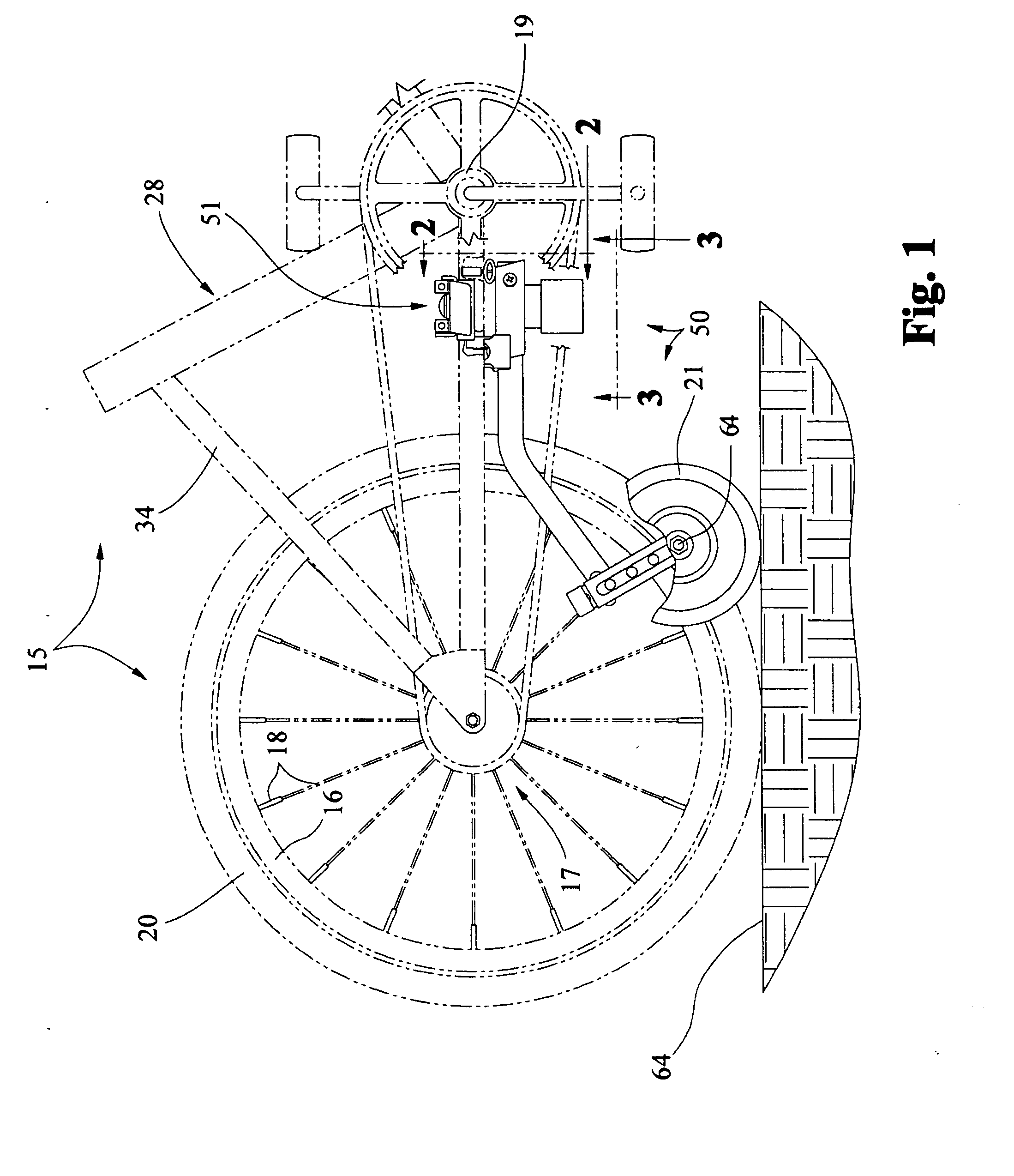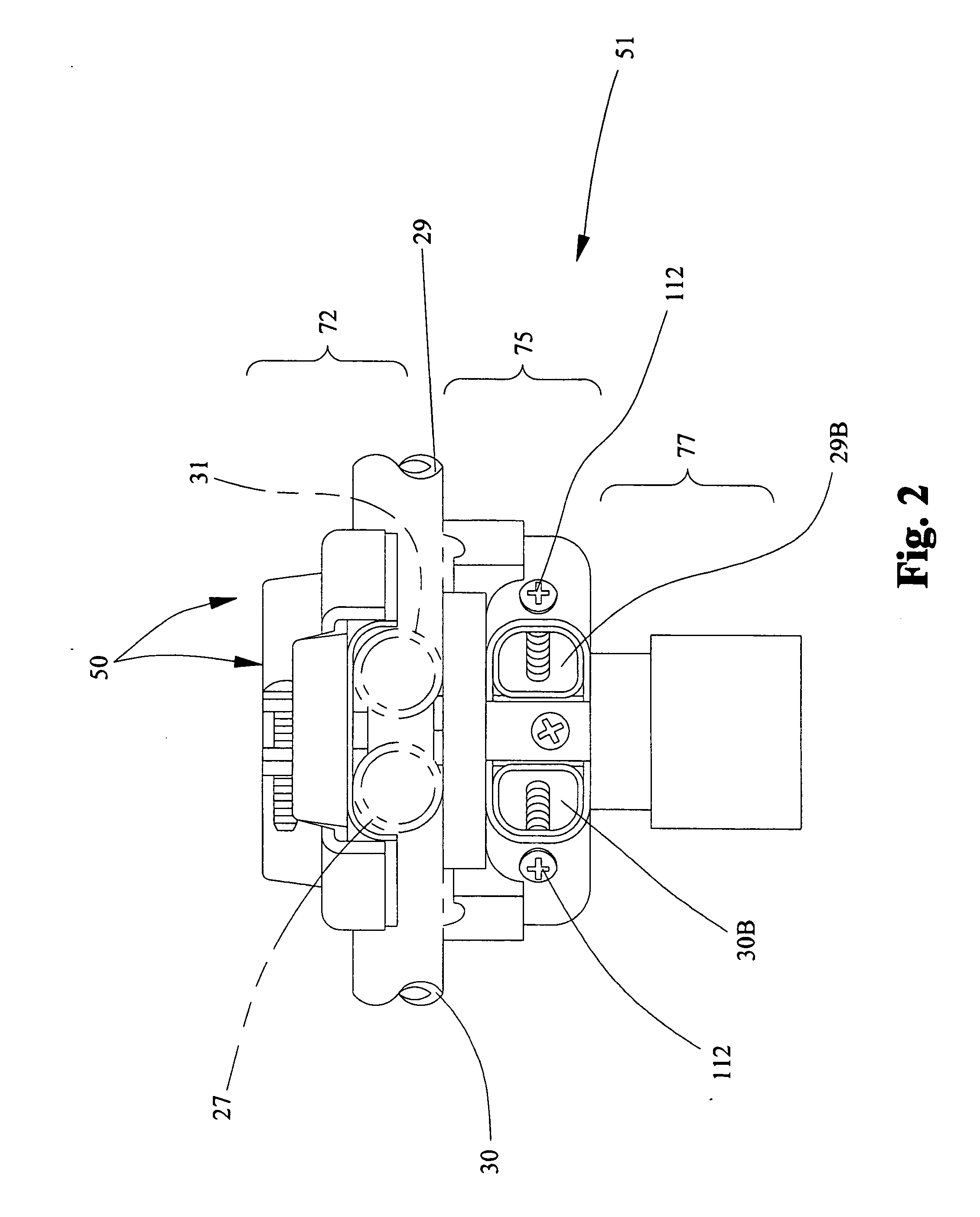Bicycle training wheel assembly
- Summary
- Abstract
- Description
- Claims
- Application Information
AI Technical Summary
Benefits of technology
Problems solved by technology
Method used
Image
Examples
Embodiment Construction
[0053]Initially referring to FIGS. 1-4, 7 and 8, a conventional bicycle upon which the invention is to be deployed and used is designated generally by the reference numeral 15. As only the rear section of the bicycle 15 is important for the disclosure, front parts of the conventional bicycle 15 have been omitted for brevity. The bicycle rear supports a conventional rear wheel assembly 17 that is to be stabilized by the training wheel assembly discussed hereinafter as the bike rolls over a variety of surfaces, such as the ideal flat surface 32 (FIG. 1).
[0054]A conventional rear bicycle wheel 20 is rotatably supported by axle 70 (FIG. 4) that penetrates the rear of both rearwardly extending, horizontally disposed bicycle side frame tubes 27 and 31 (i.e., FIGS. 3, 5) to secure conventional drive sprocket 26. Conventional radially spaced apart spokes 18 extend between wheel rim 16 and the sprocket 26. Bicycle frame tubes 27, 31 extend to a conventional transverse crank sleeve 19 to whic...
PUM
 Login to View More
Login to View More Abstract
Description
Claims
Application Information
 Login to View More
Login to View More - R&D
- Intellectual Property
- Life Sciences
- Materials
- Tech Scout
- Unparalleled Data Quality
- Higher Quality Content
- 60% Fewer Hallucinations
Browse by: Latest US Patents, China's latest patents, Technical Efficacy Thesaurus, Application Domain, Technology Topic, Popular Technical Reports.
© 2025 PatSnap. All rights reserved.Legal|Privacy policy|Modern Slavery Act Transparency Statement|Sitemap|About US| Contact US: help@patsnap.com



